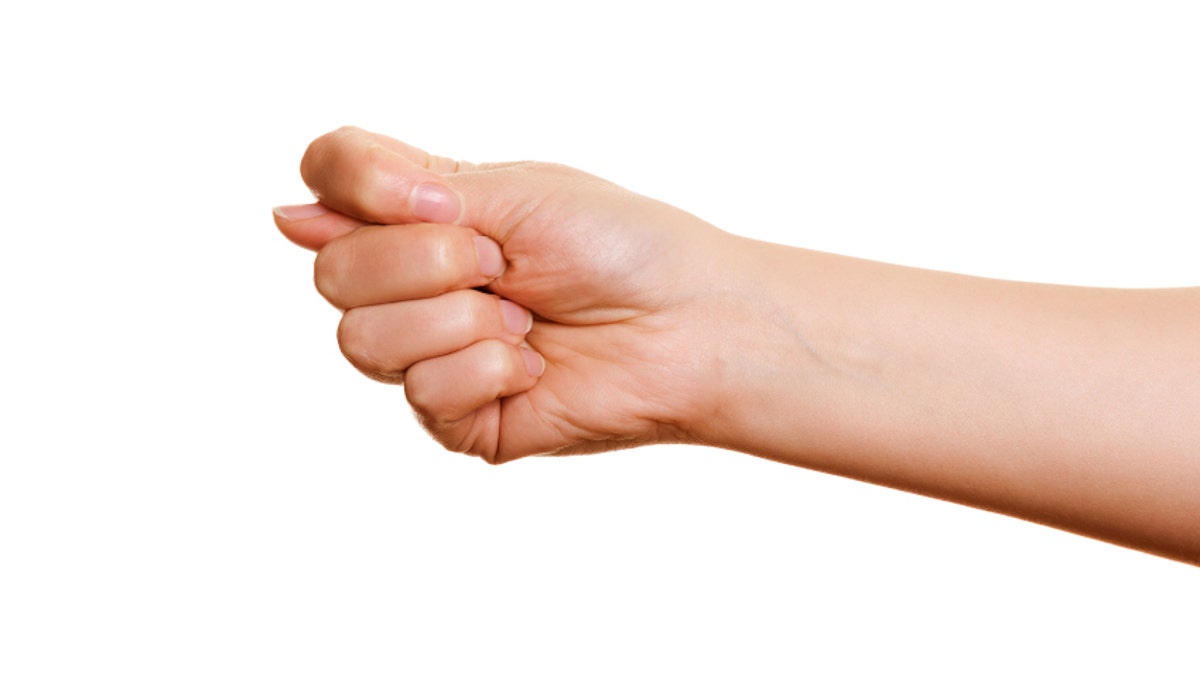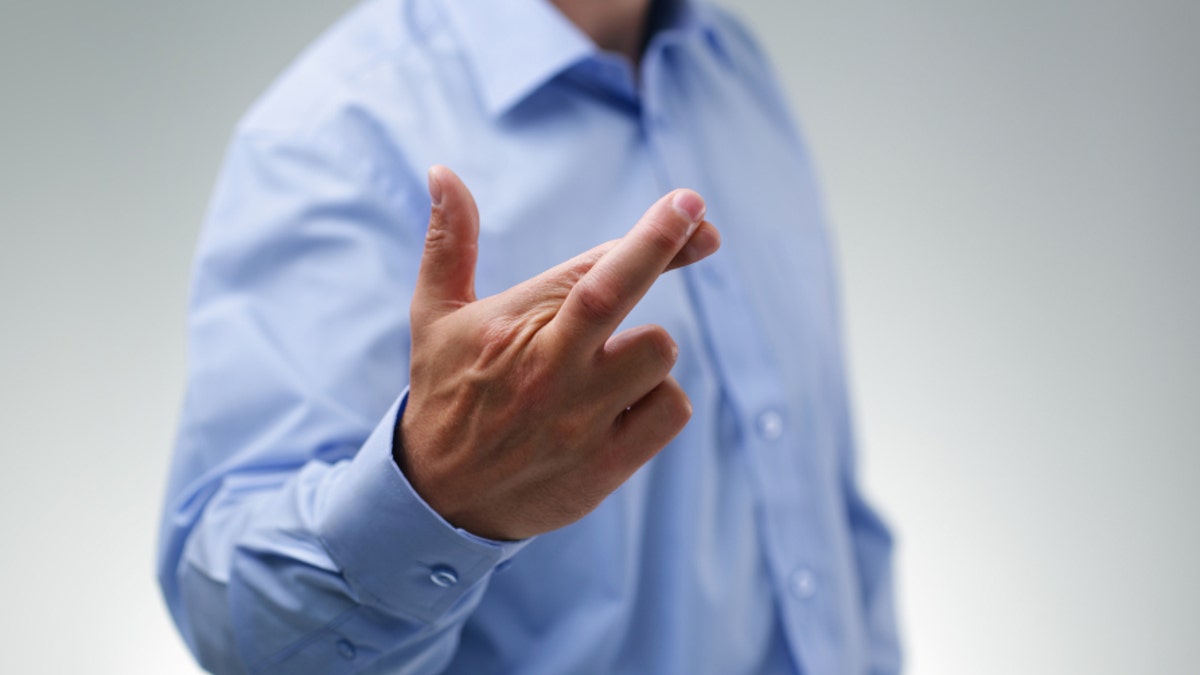
Thumbs up doesn't mean "good job" in every culture. (iStock)
1. The chin flick. Brushing the back of your hand underneath your chin in a flicking motion means “get lost” in Belgium, northern Italy, and Tunisia. In France, this gesture is known as la barbe (”the beard”) and is the hand-sign equivalent of macho grandstanding.
2. The fig. A clenched fist with your thumb between your first and second fingers means “screw you” (to put it mildly) in Turkey, Russia, and Indonesia. And in some countries it symbolizes lady parts. You know what I mean.

Fig isolated on a white background. Woman's hand (iStock)
3. Forearm jerk. This is the action of punching your fist into your elbow joint while raising the other fist up in front of you. It will not get you a positive reaction in most parts of southern Europe or Brazil, and it’s used commonly by soccer fans wanting to send an offensive message to the fans of the opposing team.
4. The moutza. In Greece, Mexico, the Middle East, and Africa, the action of raising your open hand, palm out, with spread fingers in front of someone is a serious sign of displeasure. Possibly one of the oldest hand gestures still in use, it dates all the way back to ancient Byzantium, when criminals were chained to donkeys and paraded through the streets, where locals would rub their own feces onto the prisoner.
5. The cutis. Flicking your thumb from the back of your upper front teeth toward someone is seriously nasty in India and Pakistan and simply means “f*** you.” Very nice. This sign will likely get you ejected from any place of business and not welcomed back.
6. Five fathers. Arab and Caribbean countries see the action of pointing your right index finger and the grouped finger tips of your left hand as a way of saying, “you have five fathers.” Or, in harsher terms, “your mother is promiscuous.” So if you want to get deported in the Middle East, this is your go-to.
There are also several gestures that we use on a daily basis in the U.S., almost as a reflex, that mean something completely different elsewhere.

Businessman waiting with fingers crossed wishing for good luck
7. Head shake. Most people assume that nodding your head is the universal sign for “yes” and shaking your head is the sign for “no.” But in Greece and Bulgaria, these actions are reversed. This can lead to some serious confusion if you are being hit on or trying to order food off a menu.
8. Crossing your fingers. In Vietnam, crossing your fingers, as we would in the U.S. to wish for luck, depicts a woman’s genitalia and is considered extremely insulting if aimed at another person. It is the hand-sign alternative of calling someone the c-word.
9. Horns. The placement of your fingers to show horns, usually known as the symbol for “rock on,” has a different meaning in Spain, Greece, and Italy — where it is called the “corna” and is considered a suggestive gesture made to a man to imply that his wife is cheating on him. It dates back more than 2,500 years and signifies a bull’s horns.
10. Thumbs up. The thumbs-up sign does not mean “that’s great” in Australia as it does here. There, it means “up yours” or the painful-sounding “sit on it.” Basically, you are telling a person that you hope he gets something inserted up his bottom.
See more of the world's most surprising offensive gestures.
More from Yahoo! Travel
The Worst Stereotypes About Every U.S. State




















